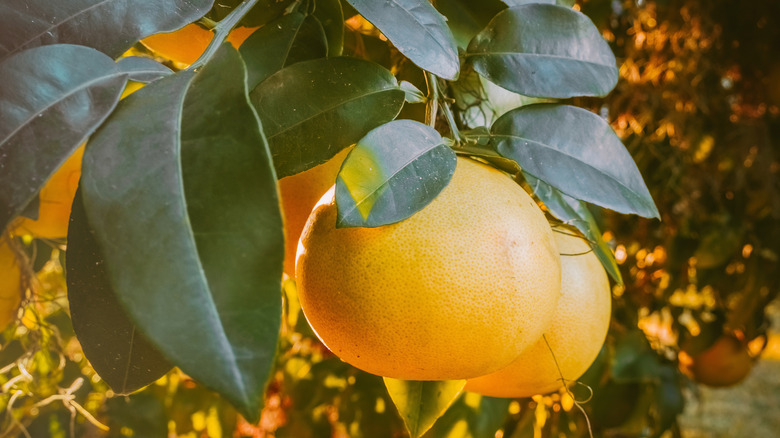Grapefruit Prototypes Sold For Over $100 A Box At The 1904 World's Fair
If grapefruit were a person, it might be that neighbor of yours who you enjoy having a chat with whenever you run into them at the corner grocery store, but who you probably wouldn't go out of your way to invite to your house for dinner. Grapefruit tastes both bitter and sour, but with just enough sweetness to pleasingly tingle the taste buds. (Red grapefruits are the sweetest variety.)
Grapefruit is both nutritious and likable enough to have earned itself a place across American breakfast, lunch, and dinner tables, especially throughout much of the 20th century. Nevertheless, grapefruit is considered something of an "also-ran" in today's fruit market, failing to crack even the top 20 most popular fruits in the U.S., per Fresh Produce.
So, you might be surprised to learn that when grapefruit was first introduced to the U.S. from the Caribbean, it was a hot commodity. Indeed, at the 1904 World's Fair in St. Louis, Missouri, early prototypes of what we now think of as grapefruit commanded $5 a box. In case you're wondering — thanks to inflation — that is the equivalent of well over $100 per box in today's money.
The underappreciated grapefruit was once a fancy food
Grapefruit's earliest prototype appeared several hundred years ago as an accidental hybrid of the pomelo and the sweet orange. It was dubbed "forbidden fruit" in the mid-18th century by the British-born Reverend Griffith Hughes, who stumbled upon one of the world's first groves in Barbados. In 1823, its seeds made their way to Florida by way of Count Odette Philippe, who planted and distributed them prolifically, per a 2021 journal article published by the American Academy of Horticultural Science.
The Count further hybridized the resulting plants into a continually evolving family of cultivars we recognize as grapefruit today. During his lifetime, grapefruit was still so rare that only the wealthy could afford it. Throughout the remainder of the 19th century, even as Florida ramped up its grapefruit cultivation and exportation, grapefruit was still considered a "rich man's dish."
That only began to change in the wake of the 1904 World's Fair, at which Florida exhibited the oversized bittersweet citrus fruit and sold it for the aforesaid pretty penny. Over the next several decades, as grapefruit became more widely known and available, its price dropped, and its popularity soared. By 1976, the average American was consuming 25 pounds per year (via The Washington Post). Grapefruit has since dwindled in popularity. And one might say that's a shame considering this erstwhile luxury food can now be had for roughly $1 per pound.

